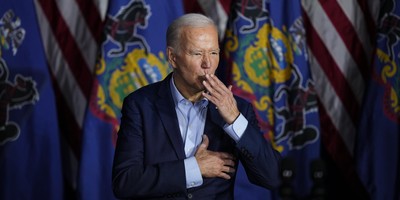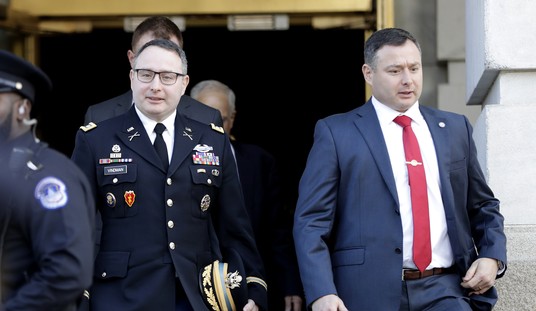The ludicrous battle over holiday displays at the Washington State Capitol reflects current confusion over coexistence of the nation's Christian heritage and its Constitutional restrictions on religious establishment. The Olympia idiocy also highlights the radical nature of social changes regularly demanded by secularist and separationist militants.
The controversy began when The Department of General Administration (which administers the Capitol grounds) granted permission for private citizens to display a nativity scene and a Hanukkah menorah in a relatively obscure passageway of the third story of the Capitol Building. The "Freedom from Religion Foundation" responded with a notorious, officially approved and nationally publicized sign praising atheism and decrying religion for "enslaving minds and hardening hearts." Subsequent applications poured in for a Buddhist display, a secular Jewish banner, a mannequin of a saint holding a Merry Christmas greeting to atheists, an aluminum pole to celebrate the Seinfeld-invented holiday of Festivus, and a "Flying Spaghetti Monster Holiday Display." The most explosive proposal arrived from Topeka, Kansas, courtesy of the militant Westboro Baptist Church, demanding a large sign with a poem proclaiming that "Santa Claus Will Take You to Hell" and condemning the Jolly Old Elf as the source of the nation's moral and economic breakdown.
Overwhelmed with the number of applications and embarrassed by the unwanted media controversy, the Department of General Administration declared a "moratorium" on new holiday displays but allowed the already permitted items (including the Menorah scheduled for installation on the first day of Hanukkah, December 21st) to proceed as planned.
To those who object to any expression of religious sentiment or symbolism on public property, the Washington wackiness suggested the inevitable result of even the most trivial and well-meaning breach in the "wall of separation" between faith and state. According to this reasoning, once you've permitted a nativity scene, there's no reasonable basis for resisting the Flying Spaghetti Monster Holiday Display.
Recommended
This argument ignores the lessons of 200 years of national tradition and settled constitutional interpretation. Those who believe that Christmas symbols and Festivus poles equally challenge the First Amendment establishment clause unthinkingly accept some of the pernicious and prevalent distortions of ignorant political correctness.
My new bestselling book "The 10 Big Lies About America" highlights the distortions behind separationist dogma under the heading of Big Lie Number Three: "The Founders Intended a Secular, Not Christian, Nation."
In fact, all framers of the Constitution and the Declaration of Independence accepted and endorsed the deeply religious nature of the people they represented. The great majority of those leaders (including Jefferson) openly expressed their conviction that the survival of liberty depended on Christian faith. It never occurred to George Washington that when he proclaimed days of prayer or fasting for the Continental Army (and later, as President, for the nation at large) he would need to honor similar occasions for Muslims, Hindus pagans or non-believers.
In my book, I cite the authoritative explanation of Joseph Story, a justice of the United States Supreme Court for 34 years who was appointed by President Madison ("the Father of the Constitution") in 1811. Justice Story, who was also the leading constitutional scholar of his age as the senior law professor at Harvard, observed:
"The general if not universal sentiment in America was that Christianity ought to receive encouragement from the State so far as was not incompatible with the private rights of conscience and the freedom of religious worship. An attempt to level all religions, and to make it a matter of state policy to hold all in utter indifference, would have created universal disapprobation, if not universal indignation. The real object of the First Amendment…was to exclude all rivalry among Christian sects, and to prevent any national ecclesiastical establishment which should give to a hierarchy the exclusive patronage of the national government."
For more than two centuries, government at every level followed this approach, making no "attempt to level all religions" and recognizing the privileged position of Christianity as the faith embraced by the vast majority of the nation's citizens. If municipalities or other public entities authorized Hanukkah displays to accompany the Christmas trees that became common everywhere, they did so because the Christian majority supported these gracious concessions to a tiny Jewish minority, not because the Constitution required them. When the Treasury Department placed the motto "In God We Trust" (taken from the last verse of the national anthem, "The Star Spangled Banner") on our currency during the War Between the States, no one (quite literally, no one) suggested alternate greenbacks with slogans expressing distrust or resentment toward the deity.
Even the briefest examination of American history and culture makes clear the long-standing comfort with religious and specifically Christian expressions in the public sphere. The "Battle Hymn of the Republic" that inspired Union troops during the nation's bloodiest conflict concludes with a verse declaring:
"In the beauty of the lilies Christ was born across the sea
With a glory in his bosom that transfigures you and me
As He died to make men holy let us die to make men free
His truth is marching on."
Great choirs still sing this inspirational hymn on important state occasions (including the recent official visit of Pope Benedict) without credible insistence that they balance the lyrics with a performance of Adam Sandler's "Hanukkah Song," or Westboro Baptist's "Santa Claus Will Take You to Hell" (sample lyrics: "Don't leave your kids with this red fright/Just like the priests he'll rape 'em at night.")
The most obvious point about the annual quarrels over Christmas symbols and traditions involves the bizarre, passionate but unacknowledged desire by secularists to alter America beyond recognition. When the majority craves wreathes or crèches or carols or even prayer in schools, it hardly amounts to a drive to impose theocracy --- unless you consider the United States of the 1950's an example of repressive and dangerous theocracy. The Eisenhower era saw far more public reflections of the nation's Christian heritage than we sanction today and yet no sane observer could suggest that the nation of just fifty years ago featured an obnoxious or intrusive ecclesiastical establishment.
The separationist extremists seek a Christmas -free and religion-free America that never existed before – or else a nation that even-handedly mocks a great multiplicity of faiths, as did the proposed displays in Olympia. Given the radical departure represented by this vision for our future, the secularists should answer a basic question: what leads them to believe that an America with less religious symbolism and less Christian tradition would represent an improvement on the nation as it's always existed and flourished to the present day?
Of course, the state officials in Washington made the right decision to place a "moratorium" on new proposed displays for the Capitol but they reached this conclusion for the wrong reasons. The nativity scene and the menorah deserved pride of place in Olympia not just because their advocates applied first but because they represent viable religious traditions embraced by millions of citizens. The atheist sign accompanying these time-honored displays represents a denigration of faith, not an affirmation of anything.
There's nothing improper or unconstitutional about public officials granting more leeway for Christmas symbols than for accoutrements to the comic TV holiday "Festivus." The very idea of government of the people, by the people and for the people suggests official reflection of the values and preferences of the vast majority, as long as that reflection (in Justice Story's words) is "not incompatible with the private rights of conscience and the freedom of religious worship."
When bureaucrats join the public in rejecting the Big Lie of a traditionally secular America, we can all proceed to relish the joys of the beautiful Christmas season with less confusion and controversy than the "equal access" obsessives typified by those benighted bozos in Washington State.

























Join the conversation as a VIP Member